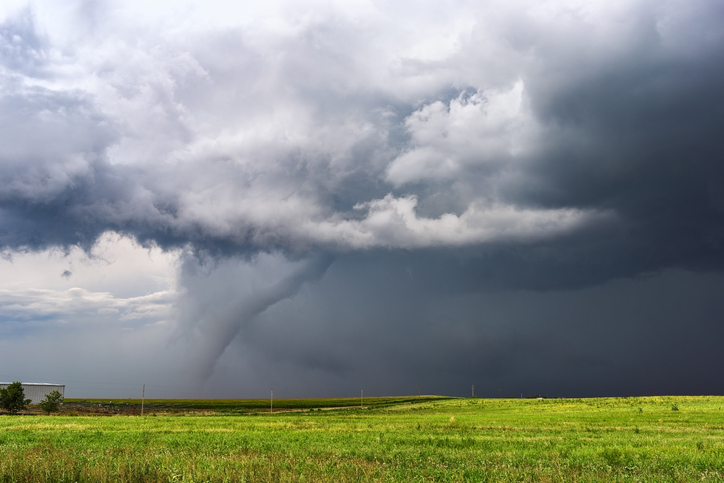
Wildfires, hurricanes, a derecho.
If you live outside California or other parts of the West, you may have forgotten about the wildfires and the estimated $16.5 billion in losses they cost last summer and fall, along with at least 46 lives. If you didn’t lose a loved one or suffer property damage from Hurricanes Laura, Sally or Isaiah, those storms may be obscured among the dark recollections of 2020. If you didn’t witness the destruction a high-wind event known as a derecho inflicted on much of the Midwest, you may not remember what a derecho is.
A raging pandemic, political turmoil and a teetering economy can affect a nation’s collective memory that way.
But residents and other property owners in the areas directly affected by those events haven’t forgotten. And if the blazes that ravaged broad swaths of the western states, the hurricanes that lashed the Gulf and East Coasts, and the derecho that tore through the Midwest temporarily slipped your mind, the process of renewing your Property Insurance is sure to serve as a reminder.
On January 26, Risk Placement Services (RPS) published a report, “2021 U.S. Property Market Outlook” forecasting Commercial Property Insurance rate increases ranging from, as Insurance Business Magazine reported, “the high single digits to the 15% range on clean accounts, and higher increases on accounts with losses.”
How We Got Here and Where We’re Going
The RPS report arrives on the heels of Alera Group’s Property & Casualty 2021 Market Outlook, a whitepaper published in December 2020, and, like the Alera Group publication, cites the impact of a historically high number of recent catastrophic events, including wildfires and named storms.
From August 1 until the end of 2020 alone, severe weather events caused $71 billion dollars in damage and killed 181 people, according to the National Centers for Environmental Information (NOAA). The five most catastrophic:
- Hurricane Laura (LA, Aug. 27-28) – 42 deaths, $19 billion
- Western Wildfires (CA, OR, WA; Aug. 1-Dec. 30) – 46 deaths, $16.5 billion
- Derecho (SD, IA, IL, MN, IN, OH; Aug. 10) – 4 deaths, $11 billion
- Hurricane Sally (AL, FL, GA; Sept. 15-17) – 5 deaths, $7.3 billion
- Hurricane Isaias (NC, with related damage up the East Coast; Aug. 3-4) – 16 deaths, $4.8 billion
The effects of such events and years of similar severe weather occurrences that preceded them, both the Alera Group and RPS reports note, include not only higher premiums but also stricter policy terms, reduced capacity, and heightened underwriter scrutiny and selectivity. This has resulted in greater carrier reliance on reinsurance providers, which in turn has led to rate hikes that ultimately get passed on to insurance buyers.
In addition to the aftermath of severe weather, commercial property owners may also encounter unfavorable conditions resulting from COVID-19 and civil disorder – specifically communicable disease and riot exclusions.
There is, however, some good news:
- While premiums and rates continue to rise, the increases are moderating.
- Larger deductibles – more than $100,000 for larger accounts – are helping to offset higher premiums, though unfavorable loss experience will result in even greater deductibles.
- Insurers, while seemingly in no hurry to bind policies, are cooperating more with agents and broker working to close gaps in coverage.
Outlook Heading into 2021
Here’s the overall landscape for Commercial Property insurance as outlined in the Alera Group outlook:
-
- The insurance industry’s profitability has been heavily impacted by a historically high number of catastrophic events since 2017, including “named” storms (an annual record of 30 to date in 2020), massive wildfires throughout the western states and COVID-19.
- The need for underwriting profitability will result in continuation of higher pricing and more restrictive underwriting.
- Capacity remains available but will be offered and priced commensurate with the underwriter’s perception of the risk.
- Underwriting selectivity will be skewed in favor of risks identified as having lower than average exposure to catastrophes (e.g., earthquakes, hurricanes, flooding, wildfires).
- Insureds deemed to be “higher risk” should anticipate greater than average price increases, being offered lower values or limits and greater self-insured retentions and deductibles.
At the time of the Outlook’s publication in December 2020, rates, availability, capacity and underwriting scrutiny/selectivity all were trending unfavorably for Property Insurance buyers. As we head into the second month of 2021, those trends haven’t reversed, but they are, as earlier noted, less severe.
To obtain the entire Property & Casualty 2021 Market Outlook whitepaper, click the button below.
GET THE WHITEPAPER
Not So Sunny and Golden
As if the overall impact of natural disasters in the Sunshine State weren’t bad enough, there’s this development, reported in Insurance Journal: “Florida’s Property Insurance Market Is ‘Spiraling Towards Collapse’ Due to Litigation.” Among the findings of the study cited in Insurance Journal:
- Litigation frequency and severity represents an additional expense load of 17% (and rising) on all earned premiums for insurers in Florida compared with other catastrophe-prone states.
- Florida consumers are paying a “hidden tax” to fund the litigation that averaged about $680 per family in 2020.
In the Golden State of California, meanwhile, it’s disaster upon disaster.
As recently as January 26, California Insurance Commissioner Ricardo Lara was “alerting residents to review their current insurance policies in the midst of a forecast of winter weather bringing the possibility of floods, mudslides, debris flows and other disasters to recent wildfire burn areas throughout the state,” reports Insurance Journal.
“Lara issued a formal notice to insurance companies reminding them of their duty to cover damage from any future mudslide or similar disaster that is caused by recent wildfires that weakened hillsides,” Insurance Journal adds, while also including this link to a California Department of Insurance fact sheet about what Homeowners Insurance policies and the National Flood Insurance Program cover.
The publication goes on to note:
“The Montecito mudslide in Santa Barbara County in January 2018 that followed the destructive Thomas Fire claimed 23 lives and caused more than $421 million in damage, according to CDI data. Following that disaster, the department issued a notice to insurance companies about their requirement to pay mudslide claims that are directly or indirectly caused by the wildfires.”
What You Can Do
Protecting your organization with a cost-effective insurance program should be a proactive process. Here are some steps you can take:
- Meet with your underwriter, and enter the meeting prepared. The key to obtaining the best pricing is to have five full years of currently valued loss experience and accurate property values.
- While risk management is always a key component element of containing insurance costs, it can’t be emphasized enough given a combination of hard market and heightened risks.
- Work closely with a knowledgeable, independent agent/broker who serves as a trusted adviser. In addition to marketing your organization to multiple carriers for the best available premium and limits, as well as the fewest possible exclusions, such an adviser will work closely with you throughout the underwriting process and ensure you have the resources and services to make your risk management program comprehensive and effective.
- Gain a better understanding of your Commercial Property Insurance Rating. Alera Group’s brief guide explains the types of property rating and insights on contributing factors such as construction, occupancy, protection and exposure.
GET THE RATING GUIDE
About the Author
Steve Felker
President, Risk Management
GCG Financial, an Alera Group Company
Steve joined GCG Risk Management Consultants, the Property and Casualty Insurance arm of GCG, in 2009. Under his leadership, the practice has grown rapidly, acquiring key talent and deepening its relationships with key industry carriers to provide broader markets to clients. Steve’s innovative and customized client solutions have helped build strong client relationships. His clients value his technical focus and sound business advice. The primary market segment is medium-sized to large businesses with an additional emphasis on personal insurance for individuals. GCG provides risk management advice and insurance solutions to hundreds of clients and represents the leading insurance carriers in the Property and Casualty industry.
Steve began his career at Lawton-Byrne-Bruner Insurance Agency (LBB), the largest insurance brokerage firm in St. Louis at the time. During his 12-year career there he was elected Senior Vice President and then became an owner of the firm. In 1986, Steve was instrumental in the sale of LBB to Marsh & McLennan, Inc., which named him Managing Director, the firm’s highest professional designation. Over the next 24 years, he held numerous positions, including head of the St. Louis Office for 15 years.
Contact information:
- steve.felker@gcgfinancial.com
- (847) 457-3213






